Granma 299
The urgent need for a resistance front

from the left
The urgent need for a resistance front
If democratic forms of government have been subjected to the harshest tests in recent times, nowhere have they been so fiercely attacked and placed in such a serious disruption as in our America.
Author: Raúl Roa García | internet@granma.cu
November 4, 2018 22:11:08
A CubaNews translation.
Edited by Walter Lippmann.
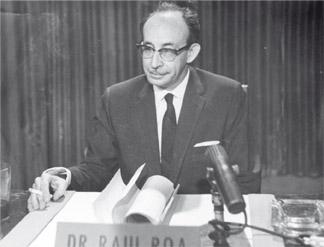
“Peace is the supreme aspiration of the man who feels freedom as an imperative of conscience. Photo: Archive.
If democratic forms of government have been subjected to the harshest tests in recent times, nowhere have they been so ferociously attacked and placed in such a serious disruption as in our America. From south to north, military lodges, lords of the earth, merchants of power, wild oligarchies and big companies, in a sinister consortium, have been abolishing the fundamental freedoms of man and of the citizen, without the UN and the OAS giving them a break, The cynical adulteration of the popular will, or the violent substitution of constitutionally-elected governments by autocracies using typical totalitarian rhetoric, characterize this dramatic process, which threatens to be generalized to the whole continent.
Pseudo-Marxist fifth columnism and imperialist greed today lord it over a beam of invertebrate nations, at the mercy of unscrupulous swords, gamonales, politicians, bankers and businessmen. Scarce governments of popular roots, the majority undermined by administrative corruption, social imbalances, electoral demagoguery and colonial exploitation, complete this gloomy picture. There is no doubt that the fate of democracy is cast. The unavoidable urgency of forming a broad front of resistance to the unbridled aggressiveness of the enemies of popular liberties is obvious.
It is indisputable that the democratic conception of life, society and the state is consubstantial with the spirit and historical development of our peoples; but, no less, that conception is currently threatened by the most regressive and rapacious forces of our time.
The central question to be debated is how to galvanize the democratic regime, to the point of promoting, in the peoples, the passionate determination to defend it, at the price of life, in all contingencies and avatars. A democratic regime without economic content, without a broad social base and without the active participation of the people in the orientation of public power, is a useless piece of junk at this historic juncture of transition. There can be no room for circumlocutions or euphemisms.
The fundamental problem facing democracy at this time is how to organize society without compromising freedom. On a universal level, it is now imperative that democracy clearly distinguishes subjective rights from patrimonial rights. Questions concerning the human person can only be resolved with the “discovery and establishment of a fairer legal structure, which allows the problem to be reduced to its true terms”.
Economic rights can already exist only in function of society. No individual interest, which pretends to oppose the social interest, is legitimate. If we aspire for man to recover his “lost fertility” and to develop, to the full, his aptitudes and powers, it is indispensable to socially discipline things. The task ahead of the democratic movement is extremely complex.
In the particular case of our America, we have to count on what history has given us. In material and cultural terms, much progress has been made so far this century. Considering the process as a whole, we must agree, however, that the economic, social and administrative structure of the Latin American peoples is in need of a substantial transformation. This transformation must go hand in hand with respect for public liberties and an international policy of militant repudiation of all regimes that violate human dignity.
It should be insisted that only through clean elections, administrative honesty, public freedoms, economic welfare, social justice, diffusion of light and consolidation of sovereignty can the representative institutions in this hemisphere be saved. The opportunity is unique to provide content and historical projection to the fight against the American dictatorships.
The American states have acquired the commitment to guarantee freedom and justice to the peoples by signing the Charter of Human Rights in the UN Charter of the Rights and Duties of Man at the IX Inter-American Conference in Bogota.
Peace is the supreme aspiration of the man who feels freedom as an imperative of conscience. The role that the leaders of the working forces will play is of the first line. No one like them will be able to contribute the most urgent and effective formulas for social improvement to strengthen the democratic regime.
Nor can the problem of the industrialization of our America be uncontroversial. Increasing the economic potential of our peoples is one of the most effective means of strengthening and consolidating the democratic regime and of putting at bay the imperialists of every sign and of every bay.
The American states have made a commitment to guarantee freedom and justice to the peoples by signing the Charter of Human Rights in the UN Charter of the Rights and Duties of Man at the IX Inter-American Conference in Bogota.
Peace is the supreme aspiration of the man who feels freedom as an imperative of conscience. The role that the leaders of the working forces will play is of the first line. No one like them will be able to contribute the most urgent and effective formulas for social improvement to strengthen the democratic regime.
The problem of the industrialization of our America cannot be uncontroversial either. Increasing the economic potential of our peoples is one of the most effective means of strengthening and consolidating the democratic regime and of putting at bay the imperialists of every sign and every bay.
The way in which the most developed countries can contribute to this increase in our economic potential must be considered, in the light of this question: could governments that are representative and respectful of public liberties and those that are born of the usurpation of the will of the people and deny their governed the enjoyment of the essential rights of man and of the citizen, be placed on an equal footing with regard to this aid? Nor can the question of the recognition of de facto governments be ignored. On this matter ,there are no guidelines within the inter-American public law, nor unanimity of criteria in the chancelleries.
If democracy needs both America to overcome the deep crisis it is going through, it is essential that the policy of good neighborliness be effectively restored. After the death of Franklyn Delano Roosevelt, on many osions the “good guys have been us and the neighbors them. May the government of the people, by the people and for the people, cease to be the government in the name of the people, without the people and against the people! And may they live on an equal footing, in peace and harmony, the America of Juarez and the America of Lincoln!
(Excerpts taken from the book 15 años después [15 years later], Editorial Librería Selecta, Havana, 1950).
Iran has grown in resistance

Iran has grown in resistance
In 40 years, the Islamic Republic of Iran has resisted all kinds of compromises on the part of the United States, in the imperial eagerness to destroy the Revolution
Author: Elson Concepción Pérez | mailto:internet@granma.cu
February 11, 2019 21:02:44
A CubaNews translation.
Edited by Walter Lippmann.
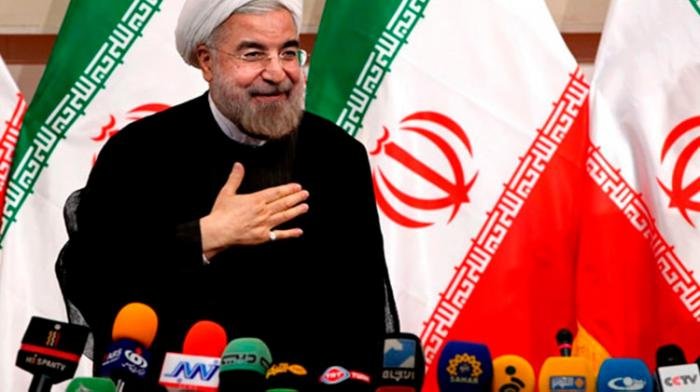
This economic war has been imposed on us, but we will stand,” said Hasan Rohani, Iranian president. Photo: AP
In 40 years, the Islamic Republic of Iran has resisted all kinds of compromises on the part of the U.S., in the imperial eagerness to destroy the Revolution.
There have been four decades in which significant advances have been made as a guarantee that its project looks towards the present and future, from the economic, scientific and peaceful nuclear development, among other achievements.
That February 11, 1979, the founder of the Islamic Republic, Imam Khomeini, who had returned to the Persian country after 15 years in exile in Iraq, Turkey and France, became the leader of his nation until his death in 1989.
According to Ayatollah Ahmad Yanathi, the current president of the Assembly of Experts, “Khomeini succeeded in restoring the dignity of Islam and taught the population to fight against the humiliation of the West.
History recalls that, in 1951, Iran managed to establish the first democratically elected government and as leader held the post of Prime Minister, Mohamad Mosadeq, who nationalized the country’s oil industry.
Two years later, in 1953, the U.S. and British intelligence services staged a coup d’état and wiped out the popular government of the time and entrenched Mohamad Reza Pahlavi in power.
Today, the same enemy of that time – the governments of the United States and its ally Israel as a spearhead – maintains and increases the threats against the country and applies more and more economic sanctions with the aim of surrendering to the population.
An unprecedented and very characteristic event of the current US administration of Donald Trump was the unilateral break with the Nuclear Agreement signed by Iran and five other powers in 2015, considered one of the greatest achievements in international relations in recent decades.
In that imperial greed that takes no account of the people at all, National Security Advisor John Bolton assured last year that Iran would not celebrate the 40th anniversary of its Revolution, frankly threatening to reverse that nation’s revolutionary process.
The Islamic Republic of Iran, whose project in all orders has its vision in the autonomous development of the different fronts, including the military, exhibited during these days of celebration a long-range missile with a radius of 1 350 kilometers.
The Iranian Ministry of Defense presented the new cruise missile called Hoveize, manufactured locally and successfully tested, according to the ISNA news agency. The authorities claim that their missiles are only defensive and deterrent.
According to Hispantv, with the victory of the Islamic Revolution, Iran designed great objectives such as economic independence, self-sufficiency, the creation of jobs and a standard of living for its citizens.
Among its achievements is the significant reduction of poverty in the country. In 1977, according to the World Bank, 46% of Iranians lived below the poverty line. This figure dropped to 8% in 2015, according to a World Economic Forum report.
Although Iran is ranked among the developing countries, it has made great strides in aerospace, becoming one of the pioneers in the field. In 2009, it launched its first home-made satellite, Omid, to join the small club of nine countries with such capacity.
Its scientific achievements also stand out in biotechnology. Genetic engineers have started important research in recent years, which has resulted in the production and export of dozens of biomedicines.
Iran is among the top ten countries in the world in stem cell research and technology. It has recorded great successes in animal cloning. It has also excelled in bone marrow transplantation, occupying the second position on the planet, after Italy, reported Hispantv.
The Persian country, undoubtedly, has made resistance a major reason, first to defeat their enemies and then to develop the people and make the nation self-sustainable.
An example of these days is the decision of Iran and Russia to use their national currencies in reciprocal exchange, which implies dispensing with the U.S. dollar.
Cuban doctors left in Brazil without a job

Cuban doctors left in Brazil without a job
The reality of the doctors who decided to stay in that South American nation is that they can no longer exercise their profession after the end of the More Doctors program.
February 5, 2019.
A CubaNews translation.
Edited by Walter Lippmann.
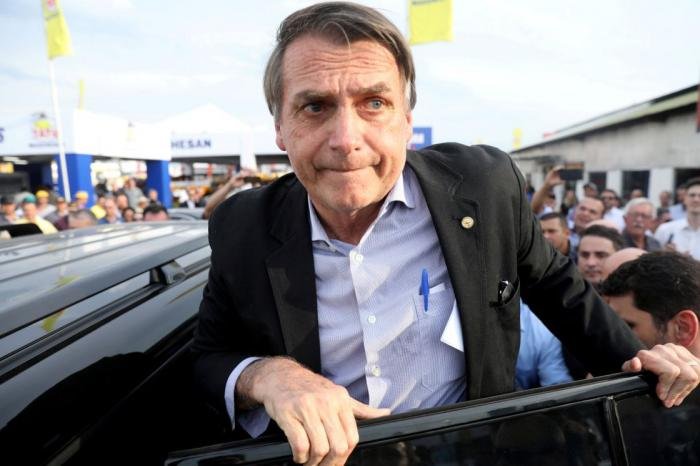
Bolsonaro fails with his supposed promise. photo: reuters
Faced with the attempt by Brazilian President Jair Bolsonaro to sully the work and honor of the Cuban doctors working in the More Doctors program, Cuba responded with customary dignity. The Ministry of Public Health announced the withdrawal of our doctors.
The decision implied the return to Cuba of the more than 8,000 doctors working in Brazil on the program that began in August 2013.
Since his election in October 2018, Bolsonaro repeatedly attacked Cuba and the More Doctors program.
In addition to repeating his questioning of the quality and training of Cuban professionals and requiring them to carry out an examination to revalidate their degrees. Bolsonaro was thus undertaking it against the PAHO-Brazil-Cuba agreements.
Of the 8,332 professionals who were in Brazil, the majority decided to return to the Island, the dignified gesture of the Cuban doctors awakened the admiration of the world and made visible once again the validity of the internationalist character of the Cuban Revolution.
But what has been the fate of the Cuban doctors who stayed in Brazil?
A paper published by EFE on February 3 describes the desperate situation in which Cuban doctors find themselves in the face of unfulfilled promises and the latent reality of a system that is not interested in the health of the poorest and that used them as a disposable tool in the machinery of manufacturing lies and manipulation.
According to EFE, from Sao Paulo, Brazil, the doctors who did not return to the island after the end of the More Doctors program can no longer practice their profession in the South American country.
Some of those who stayed were granted the status of “refugees”, so as not to lose their status as residents and be able to obtain a job portfolio, “a procedure that takes time while they do not receive any income”.
The hope of re-entering Más Médicos as a way to obtain the necessary employment is fading, “to achieve this they must wait at the end of a long line, because the competition launched by the government to fill the vacancies made Brazilian doctors a priority.
Initial applications surpassed the number of vacancies, 8,517, but there are some 800 not filled because “some of the Brazilian doctors chosen gave up their positions because they were in areas that were difficult to access or lacked resources.
Meanwhile, the Cuban doctors who remained in Brazil are trying to obtain one of the 800 places, as soon as they have the right to access the competition, a possibility that has been delayed time and time again.
Getting a job in “anything” becomes the only possibility, the other is waiting for a revalidation exam to be held in order to compete in the labor market on equal terms with Brazilians, but the bad news is that since 2017 there are no exams, it can take years for one to be called.
Vertigo in its place

Vertigo in its place
Among the list of artistic works that at the time were misunderstood and even ignored, Vertigo, the film by Hitchcock, classifies as a case worthy of study.
Author: Rolando Pérez Betancourt | internet@granma.cu
January 25, 2019 21:01:41
A CubaNews translation.
Edited by Walter Lippmann.
Among the list of artistic works that at the time were misunderstood and even ignored, Vertigo, the film by Hitchcock, classifies as a case worthy of study.
Last December, the film’s 60th anniversary was celebrated with great fanfare, and Kim Novak, the leading actress, she retired from a ranch in Oregon in her retirement ranch in Oregon.. From there she didn’t go out even to look for gold nuggets in a cinematographic world that, in the 50s and 60s of the last century, had kissed her feet. She was, however invited to participate in the 2014 Oscar ceremony, a sort of tribute, she believed, like the one offered at the Cannes Film Festival.
Just a few minutes on the stage of the so-called Mecca of cinema that cost her the most bloody jokes and mockery in various media, because of the plastic surgery that made the two characters she played in Vertigo, at 25 years of age, look very remote.
Television and social networks were filled with images of the actress and comments, such as those leaked by Donald Trump, who was not president at the time, although he had already given signs of what Twitter unleashed would become in his hands: “Kim should sue her cosmetic surgeon,” wrote the magnate.
Before returning to her ranch, Novak defended herself on Facebook: “…I’m not going to shut up in front of tyrants. You can’t let people destroy your life. You have to stand up against them.¨
Known for not giving interviews, the actress agreed a month ago to a request from an AP journalist. The pretext was impossible to ignore. Vertigo, the film that launched her career, was 60 years old and in 2012 had moved from first place in the preference of critics and historians over the mythical Citizen Kane, after 50 years of the film of Orson Welles reigning in the polls conducted by the prestigious British magazine Sight and Sound.
An ascent in which the indisputable quality of the film mediated, unusual for the Hollywood of the 50s, the love story marked by the obsession of a man (James Stewart) who intends to resurrect the woman who fascinated him, and the unparalleled performance of Kim Novak (beautiful and sensual, but nothing outstanding until then in the field of acting).
It´s producers weren´t enthusiastic, and so it competed without pain or glory at the 1958 San Sebastian Festival, it was considered below Psycho and other Hitchcock films. However, step by step it opened the way to the reign of myths thanks to its values, and also to the music of Bernard Herrmann. It´s a film that today – dozens of books and studies conceived in its favor – is considered one of the most significant in the history of cinema.
In the AP interview, Kim Novak revealed that she identified so much with the character In Vertigo because it was exactly what Hollywood was trying to do with her: turn her into what she wasn’t (another platinum blonde who competed with Marilyn Monroe and was a worthy successor to Rita Hayworth).
It is known from François Truffaut’s famous interview with the suspense magician, that Hitchcock insisted Novak had not been well on her role, to which the Frenchman responded categorically that Vertigo was she. And he didn’t lack reasons, especially when you consider that the actress played two totally different characters. However, when referring now to Hitchcock, Kim Novak has words of praise for the director who, according to Tippi Hedren (The Birds, Marnie), was nuts about blondes and sexually harassed her to the point of threatening to ruin her career.
Also with Kim Novak?
He never behaved that way with me, she responded sharply. And she added: “Others did. And, although she didn’t offer names, she said that the reports of harassment and sexual assault that flourish in Hollywood today were always like that, only now they have lost their fear and are beginning to talk.
The passionate mission of continuing to invent our own model of socialism

The passionate mission of continuing to invent our own model of socialism
Cuba will live a moment of great expectation, on February 24th, when it submits the new Constitution to a referendum.
Author: Ariel Terrero | internet@granma.cu
January 24, 2019 21:01:43
A CubaNews translation.
Edited by Walter Lippmann.
CAPTION: The participation of workers in the planning, regulation, management and control of the economy is a key to ensuring effective decentralization. Photo: Freddy Pérez Cabrera
Cuba will live a moment of great expectations, when, on February 24 it submits the new Constitution to a referendum.This is logical, after creating these expectations among the discussions in nation as a whole, seasoned with the controversial passion that identifies Cuba. But I don’t believe that the conquest of votes is the most thorny challenge posed by the Law of Laws. Not by a long shot. The big challenge comes later.
Society and its institutions will have to legislate and implement the changes and ordinances assumed under the new Constitution. They are not a few. The complex goals it proposes, to broaden the transformations of the economic, social and political model of Cuban socialism, and to deepen the process of its updating…, which has not advanced at the speed that we Cubans dreamed of when we began it more than a decade ago.
The great challenge will come with legistion, which must be much more intense than what has been achieved so far. This is so that the other branches of the legal system start from the foundation of the Magna Carta. One of those branches is the law on companies, which has not yet seen the light of day although it was promised for 2017. It is fundamental to give solidity to a scenario that bets on the coexistence between multiple economic actors, who begin to discover the benefit of alliances between presumed antagonists – in tourism and agro-industries there have been successful experiences.
Several chapters in the new law point to a reordering of government and business administration structures. These favors a more radical decentralization of this country, accustomed for decades to a rigid verticality of economic and government organizations. Perhaps the most daring change is the redesign of territorial structures to give greater prominence to municipal administrations and local development management.
The Constitution also bases the path towards an economy on a diversity of forms of ownership. State enterprise, the main actor of the socialist economy, will share legal and legitimate space with cooperatives, mixed forms and private entities, among others.
The great challenge will not be so much the acceptance of that diversity or the liberation from the cursed aura of words such as private and market. The idea that non-state forms are also a vital link in the chain of production, services and the market has gained social consensus. This aspiration, however, stumbles in an environment lacking optimal conditions for the coexistence of dissimilar forms of property.
More important and difficult than the entry of private companies into the scenario is the granting of autonomy to state-owned companies, which is proposed in Article 26 of the new Magna Carta. Although State business organizations have advanced along this path, they still carry insufficiencies that, together with financial deformations such as the monetary and exchange duality and other trade anomalies, place these entities at a disadvantage compared to non-state rivals.
With better wages and fewer bureaucratic and financial ties, cooperatives and private companies come out on the market under better conditions than state forms. In contrast, these are left with advantages to access technologies, wholesale offers and resources from external markets, but they do not manage to take advantage of them in all their dimension due to the confluence of economic limitations, clumsy interpretations of planning and the subjection to a Cuban currency overvalued at the official exchange rate, among other obstacles.
To which side would the teeter-totter of property forms be inclined in this context? Difficult answer. Risk can inhibit central decisions and state disadvantage would then threaten non-state expansion, especially for small and medium-sized private enterprises that have entered the Cuban economy with a mask of cooperatives or self-employed workers.
The participation of workers in the planning, regulation, management and control of the economy, which was symbolically incorporated with popular debate into the constitutional project, constitutes an old aspiration of society and is a key to guaranteeing effective decentralization into enterprises and budgeted units of the State.
Official Biography of Spanish President

Official Biography of H.E. Mr. Pedro Sánchez Pérez-Castejón, President of the Government of the Kingdom of Spain
He served as a Member of Congress for the Madrid constituency and Councillor in the Madrid City Council and was leader of the opposition and candidate for the Presidency of the Government between 2014 and 2016.
Author: Granma | internet@granma.cu
November 21, 2018 20:11:30
A CubaNews translation.
Edited by Walter Lippmann.
He studied Secondary Education at the Instituto Ramiro de Maeztu in Madrid, where he played in the basketball club Estudiantes.
In 1995 he graduated in Economics and Business Studies from the Real Colegio Universitario María Cristina, a centre attached to the Complutense University of Madrid.
He holds a Master’s Degree in Economics from the European Union at the Free University of Brussels and a Master’s Degree in Advanced Studies in European Economic and Monetary Integration from the Ortega y Gasset University Institute.
In 2012 he received his PhD in Economics from the Camilo José Cela University, where he taught Economics.
He worked as an advisor in the European Parliament. He was a member of the cabinet of the High Representative of the United Nations in Bosnia and Herzegovina.
In 1993 he joined the Spanish Socialist Workers’ Party (PSOE), of which he is its Secretary General.
He was a deputy in the Congress for the district of Madrid and Councillor in the City Council of Madrid.
He was leader of the opposition and candidate for the Presidency of the Government between 2014 and 2016.
He has been President of the Spanish Government since June 2018.
Married and father of two daughters.
Vigil Continues In U.S.

Vigil Continues In U.S. In Honor Of Synagogue Massacre Victims
October 29, 2018.
A CubaNews translation.
Edited by Walter Lippmann.
Several U.S. cities were the scene yesterday of vigils in honor of the victims of last Saturday’s mass shooting at a synagogue in Pittsburgh, Pennsylvania, where 11 people died and six were injured. Several Jewish organizations and interfaith groups held a service at the Adas Israel synagogue on Monday afternoon with the participation of the mayor of Washington, Muriel Bowser; and the governors of the neighboring states of Virginia, Ralph Northam; and Maryland, Larry Hogan. Other religious congregations, such as Temple De Hirsch Sinai and the Jewish Family Service, also organized a prayer service at their Capitol Hill shrine. (PL)
Falls Can and Should be Prevented

ALL ABOUT HEALTH
Falls Can and Should be Prevented
Falling is a geriatric syndrome, a disease; when it becomes recurrent it is clearly giving alarm signals that must be paid attent to.
Author: Lisandra Fariñas Acosta | lisandra@granma.cu
October 28, 2018 20:10:34
A CubaNews translation.
Edited by Walter Lippmann.
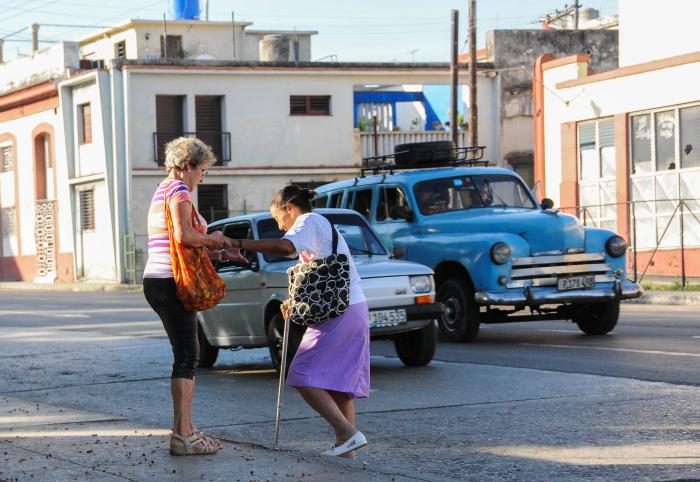
As we age we must adapt to the environment, which is often a challenge for the performance of activities of daily living, crossing streets, transportation, ant the footwear that is used, can cause of fractures on numerous occasions. Photo: Juvenal Balán
“It took human beings about five million years to learn to walk and only 70 years to fall. This, which humorously may be interesting, should not really be allowed, because falling is not a habitual state. Falling is a geriatric syndrome, a disease. In other words, not everyone falls, because there are people who reach the age of 90 without having suffered any event of this type.
This was explained to Granma by the doctor of the Argentine Association of Orthopedics and Traumatology and member of AO Trauma, Emilio Fantin. He emphasized the need to prevent falls in the elderly, an aspect that is not often thought of. For the expert, it is important not only to know what a fall is, but also to understand why we fall and to evaluate the old person who falls.
Participating in the Seminar AO Trauma “Traumatology in the Elderly”, which was held in recent days in the teaching Fructuoso Rodriguez orthopedic hospital, and included recognized experts from this organization, Dr. Fantin commented that if we take into account that 1 to 5% of falls end in fracture and almost all hip fractures are secondary to them, it is vital to talk about this issue.
After a hip fracture, between 20 and 50% of older people fall again within two to six months of the first fall, so that prevention is once again the key. It happens that of those who fall for the second time, approximately 12% have a new fracture and 5% a hip fracture.
According to the World Health Organization (WHO), there are a thousand hip fractures per million inhabitants. If this figure is taken to the aging population, it is considered that a thousand fractures occur for every 100,000 people over 60 years of age, which would correspond to 10% of this age group.
It is estimated that around 12,000 of these fractures occur annually in Cuba, with resulting costs that they imply for the patients, the family, the health system and society in general.
20.1% of the Cuban population is 60 years of age or older, as shown by data from the Center for Population and Development Studies of the National Office of Statistics and Information. According to the latest Population and Housing Census (2012), 40% of Cuban households are inhabited by older adults. In 32% of them reside up to two or three persons of 60 years or more, so it is very likely that an older adult is caring for the other, and 13% of older adults live alone.
WHEN ARE YOU AT RISK OF FALLING?
The fall causes worries from the first moment, but when it becomes something recurrent (two or more falls in the space of a year) is clearly giving alarm signs that should be addressed, warned the specialist.
At the same time,” said the interviewee, “we must pay more attention when patients tell us “I have no strength, I fall, what can I do?
In Dr. Fantin’s opinion, the first thing is to think that falls are not normal events, because the fact of being old does not necessarily imply falling. Why does it happen? It has to do with physiology and physical structure, loss of bone and muscle mass, and functions such as hearing and sight.
But these aren’t the only causes, he explained. As we age, we must adapt to the environment, which is often aggressive in carrying out the activities of daily living. The streets, the transport, the footwear that is used, derive in reason of fractures in numerous occasions.
With respect to the profile of the older adult who falls and fractures, the professor pointed out that generally they are over 80 years old, there is a poor self-perception of their state of health, cognitive deterioration, that is, of the state of consciousness, and many have depression. To this is added the presence of visual and motor deficits, because a large part of this age group needs help to walk, using walkers, canes or someone who accompanies them.
“Even if we investigate, we can find stories of falls that deny us, or do not tell because they are ashamed. It is very rare for an older person to confess to a child who has fallen. They come to the bathroom with the fracture, but they usually fall for longer: in the early morning when they go to the bathroom, for example. Falls can also be related to the consumption of certain medications and polypharmacy, which can cause fragility and gait disturbances due to unbalance,” he said.
When evaluating a patient at risk of falling, the expert commented that intrinsic and external factors must be taken into account, in addition to others that may precipitate this fact, such as alcohol consumption.
Among the intrinsic causes, diabetes is one of the most frequent, followed by the state of consciousness, that is, dementia, delirium, or depression. A third place is given to diseases where muscle mass decreases, and the fourth element is the female sex, since a greater number of falls occur in women than in men.
Regarding external factors, the interviewee mentioned domestic animals, sidewalks, stairs, public transportation and medication.
“More than four drugs a day are considered polypharmacy, and this is a cause of falls, so making adjustments to prescribed drugs is essential. The older adult is given a medication and it is never taken away, they leave it forever,” explained Dr. Fantin.
In addition, the interviewee pointed to osteoporosis, tobacco use (mainly in women) and vitamin D deficiency, as other elements not to be lost sight of. “Older adults don’t sunbathe regularly, and it’s important to get them out in the sun. The amount of ultraviolet light needed to convert vitamin D, either from the diet or as a medicine, is 10 minutes, you don’t have to go to the beach, and you just have to discover your hands and face.
The ideal,” he said, “is to treat these fractures within 48 hours of their occurrence, which has allowed mortality in the world from this cause to decrease from 30 to 10%.
Particular emphasis was made by the expert in post-cause syndrome. “Whoever falls and fractures is afraid of falling again and the great majority does not return to their previous state. Anxiety disorder is very serious, and there is a tendency to the syndrome called immobility, which can even lead to death. For each day of rest, 1% of body mass is lost,” explained Dr. Fantin, who placed great importance on family support.
It is fundamental that prevention also begins at an earlier age, stimulating, for example, exercises such as the use of bicycles, which are less expensive, ideal for recovering muscles, stimulating the semi-circular ducts of the ears and making it easier for people to have balance, concluded the interviewee.
ACCURACY
– AO Trauma is one of the four clinical subdivisions of the AO Foundation (Working Group to Study Fracture Problems) created in Switzerland in 1958. Its purpose was the integrating and aligning of efforts in research, community development, and education in Traumatology and Orthopedics at the global and regional levels.
– According to Dr. Roberto Balmaseda Manent, secretary of the Cuban Society of Orthopedics and Traumatology, it has been particularly useful for the training and improvement of specialists in this branch.
– About 600 professionals from all regions of the country have had the opportunity to be trained step by step in the courses, workshops and seminars that the Society has organized.
Fear of Competition from RT (Russia Today)

Fear of Competition from RT (Russia Today)
———————————————————————————————————————————
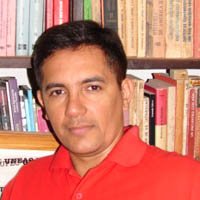 Author: Julio Martínez Molina | internet@granma.cu
Author: Julio Martínez Molina | internet@granma.cu
25 October 25, 2018
A CubaNews translation.
Edited by Walter Lippmann.
“The closure of RT by authorities in other countries is due to fear of competition,” Russian President Vladimir Putin said on Thursday, October 18, during the international discussion forum Valdái, which hosts Sochi.
Russia Today (RT) has been described since its inception, both in the United States and in some nations, as a “hostile foreign power” or “foreign agent on home soil. In fact, on July 17, it was announced that “the Australian Federal Police has opened a preliminary investigation into the chain as a suspected foreign agent.
The real sense of bitterness – or really fear or hatred – towards the Russian platform is that it is one of the few alternative voices charged with providing angles of analysis different from those provided by the mainstream American media. Organs that, no matter how “anti-Trump” they may seem, are part of the U.S.-owned corporate system.
RT represents one of the few media conglomerates on the planet (two others, bridging differences, would be Telesur in Caracas and Hispan TV in Tehran) that, without bowing to the dictates of the American empire, try to offer an objective global perspective of the local, regional and global political reality.
A balanced vision that weighs multipolar power and the sovereignty of peoples; a vision that deconstructs each deception perpetrated by the lie-repeating apparatus at the service of Washington, that gives voice to otherness and positions itself as an independent entity, cannot be well received by the Yankee powers and their European allies or clones.
The witch-hunt against the Russian station is yet another of the fronts of open war against Moscow, in the political, diplomatic and sports spheres…
Not even at the height of the Iron Curtain did American cinema and television produce as much volume of audiovisual material against Russia as they do today.
The order of the White House was and is to export that hatred. Not surprisingly, in 2016, a European Parliament report compared the “danger” of RussiaToday “with that of the Islamic State”.
The Western aversion to the progressive resurgence of the great Eurasian nation in its economic, military, scientific and communicational capacity is expressed in dissimilar ways. Attacking its website is not the least significant.
The increasing number of people who tune into the RT signal in the world puts the Western think tanks and their corporate media apparatus into a warning position. Thus, the rage against the Russian network is not only expressed in the organs of the United States, but also in a good part of the Europeans.
El País, the most read Spanish newspaper in the Spanish-speaking universe, has the challenge of the web as one of its obligatory daily tasks, along with the daily attack on Venezuela.
Korda’s Militia Woman

Korda’s Militia Woman
Granma today commemorates the 59th anniversary of the National Revolutionary Militias with the story of Idolka Sanchez, the militia face Korda immortalized with his lens in 1962.
—————————————————————————————————————————————–
Author: Alejandra García Elizalde | internet@granma.cu
October 25, 2018 21:10:37
A CubaNews translation.
Edited by Walter Lippmann.
In the crowd of that May 1, 1962, a young photographer focused on the still-adolescent face of Idolka Sánchez as she marched in front of the José Martí Memorial in Havana.
She, one of the nearly 2,000 militiawomen of the Lidia Doce women’s battalion, saw him approach, camera in hand. He didn’t seem to care about anything else. It was as if he had seen her from afar and didn’t want to let her go without obsessively capturing her image. He chose her.
“The man whose name, Korda, I had barely heard, was the same man who, in March 1960, had immortalized Che’s face with his mane in the wind, during the burial of the victims of the La Coubre terrorist attack. He ordered her to “put the machine gun up”. His order was followed by several clicks of his camera and, in a matter of seconds, she disappeared.
When she had forgotten the incident, he returned that same morning. Korda wanted to repeat two new shots. She did not want to capture just one face or one image. He was looking for a symbol, and he found it. The next day the photo went from one end of the island to the other on the cover of the Revolución newspaper.
“I felt an emotion that I cannot describe. It was not vanity, but eternal gratitude. I never thought about the transcendence of that image,” Idolka Sánchez Moreno told Granma.
Fifty-six years after that encounter with Korda, the image known as “La Miliciana” endures. The sun on her face, the severe look focused on the horizon, her embrace to the rifle that points to the sky, the beret tilted …
Today, Idolka preserves the late beauty of the 22-year-old girl who was in those early and intense times of Revolution. “I will never forget that it was a beautiful, clear morning, similar to today. I didn’t expect that it would attract the attention of any photographer, being surrounded by so many women. My main interest that day was the possibility of parading in front of the Commander in Chief,” she says.
It would take years for Idolka and Korda to meet again, after “La Miliciana” became an iconic image and adorned banners, postcards, photographic exhibitions, and appeared on the walls of workplaces and embassies. Few people know that she was the young woman in the photo.
“I remember one day, walking with my sister to work, a woman saw “La Miliciana” hanging in the window of an establishment. She, a few steps away, said, without knowing that we were listening: “Look at that, surely she left the country and yet they have her everywhere. My sister confronted her, but finally we decided to continue on our way.
She joined the Militias as soon as they were created: “I came from a family that supported every step of the revolutionaries through the Sierra, and my destiny could not be any other. I studied Law at the University, I have dedicated all my life to my country and today my two children are photographers”, remembers Idolka.
Almost two decades after that May Day, in 1981, he saw Korda again. Muchacha magazine arranged a reunion between him and “La Miliciana”.
“It was very emotional, but I never expected any recognition. That was his work. I was only an occasional model, discovered in the middle of the parade, one of so many young people who proudly wore the most beautiful of all the costumes, that of the militia.
From that meeting in front of Revolution Square on May 1, 1962, Korda once recalled that “I had been looking for hours with my camera in the crowd. The Lidia Doce women’s battalion attracted me and I captured many gestures. But in revealing only one was the indisputable one: the militia woman with the rifle held high and such a decision in her eyes that I said to myself: this is the Cuban warrior, the woman in the defense of the homeland.
Alberto Díaz Gutiérrez, better known as Alberto Korda (September 14, 1928-May 25, 2001), is one of the great photographers of all time, with a body of work that forms part of the symbolic imaginary of the Cuban Revolution.
“La Miliciana”, the instant that captured the purity and strength of women at an exceptional moment in national history, was one of his most beloved portraits. “It is a photo that will survive us,” said Korda. Future generations will admire our eternally young militia. And so it was.

“I never thought about the transcendence of that image,” confesses Idolka. Photo: José Manuel Correa
Subscribe to Blog via Email
| M | T | W | T | F | S | S |
|---|---|---|---|---|---|---|
| 1 | 2 | 3 | 4 | 5 | 6 | 7 |
| 8 | 9 | 10 | 11 | 12 | 13 | 14 |
| 15 | 16 | 17 | 18 | 19 | 20 | 21 |
| 22 | 23 | 24 | 25 | 26 | 27 | 28 |
| 29 | 30 | |||||

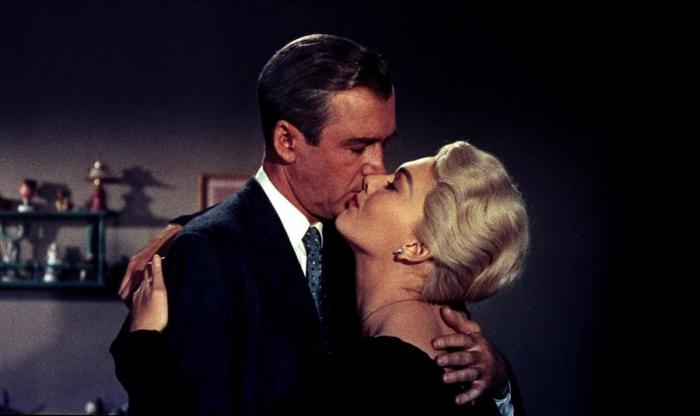
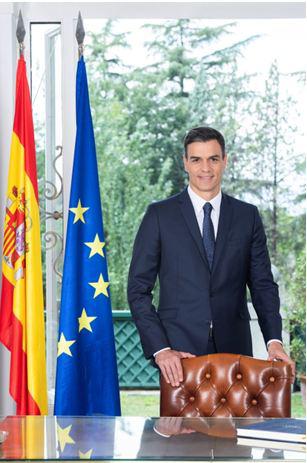

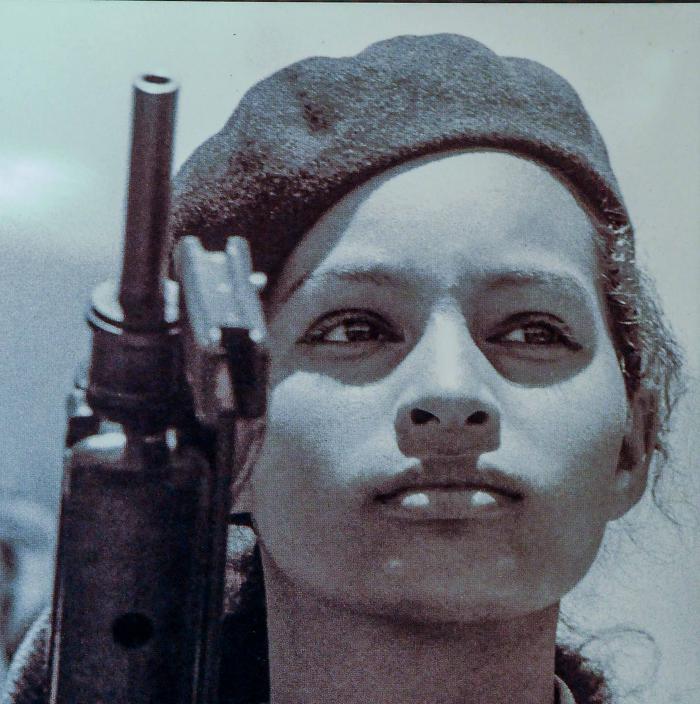
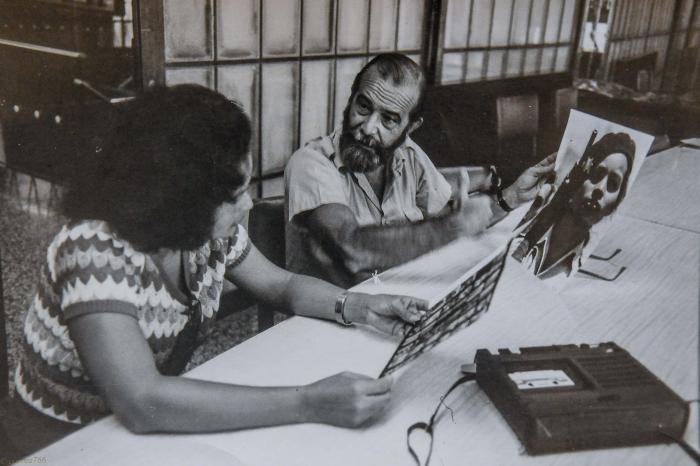
You must be logged in to post a comment.